Toyota Is Now America's Best-Selling Automaker

Japanese automaker Toyota Motor Corp looks set to embarrass American automakers on their home turf by ending the year as the U.S. market’s top-selling brand for 2021.
Toyota had previously reported it moved 688,813 vehicles in the United States from April to June, outperforming General Motors and setting the stage for the rest of the year. At the time, the domestic manufacturer claimed its numbers were down due to the global semiconductor shortage that continues to disproportionally impact American automakers. While there are a few sound logistical reasons for that, the chip deficit also becomes a convenient excuse for brands that cannot seem to get their general supply chains under control. No matter how you slice it, GM looks to have screwed up managing inventory and Toyota is picking up the slack.
Granted, all brands have yet to announce their full-year sales assessment. But Toyota already had a noteworthy lead on GM going into October and practically every outlet tracking the industry had already called it for the company going into the holiday break. In the first nine months of 2021, Toyota sold 1.86 million vehicles in the United States to GM’s 1.78 million. For the sake of comparison, the Detroit-based manufacturer managed to keep a healthy distance in 2020 by selling 2.55 million units within America to Big T’s 2.11 million — though the latter sum was still good enough for second place.
Toyota Motor North America (TMNA) said it moved 2,332,262 vehicles through all of 2021, however, the relevant reports focused primarily on its “electrified powered vehicle” (EVP) sales so it could virtue signal over how many more electrified products were sold during a particularly rough year. Investors will undoubtedly be happy because electric good, gas bad. But Toyota’s EVPs encompass everything from your standard hybrid to a fully electric plug-in car or hydrogen-powered bauble. Regardless, you’re probably not supposed to think about it as hard as I clearly do.
“Despite a second consecutive year of challenges, TMNA focused on delivering an exceptional customer experience, and we remain optimistic as our electrification strategy further evolves,” said Jack Hollis, senior vice president, Automotive Operations Group, TMNA. “Thanks to our phenomenal dealers and world-class purchasing and manufacturing teams, our inventory continues to improve and we’re preparing to introduce 21 all-new, refreshed or special edition vehicles in 2022.”
Dealerships, which have made an absolute killing as vehicle pricing continues to break records, were likewise said to be embracing new ways of doing business while revamping physical locations to cater to customers and new product. The automaker said digital retail sales of new vehicles through its SmartPath and Monogram platforms surged past 50,000 at nearly 140 dealers, adding that “more than 300 dealers will go live on both platforms by middle of 2022.”
Though, if you incorporate Lexus-branded sites, Toyota technically has around 1,500 storefronts dotted across North America. We also wouldn’t call General Motors a total loser in this until we’ve seen how much money everyone has made.
Despite Toyota taking the volumetric victory, GM has said that it’s been focusing on maximizing profitability while it continues to struggle with production setbacks. Domestic automakers tend to sell larger vehicles (specifically trucks and SUVs) with broader margins. Right now, they’re all preoccupied with finding ways to leverage that without losing more customers than absolutely necessary. Assuming domestic production soon returns to something approaching normal and pricing remains high, GM may be feeling a lot better about how 2021 went by the end of 2022. The company seems more than willing to suggest this speculative scenario, too. But I would imagine that’s because it puts a more positive spin on a lackluster 12-month period. It’s the same reason Ford harps on pickup/brand sales every single year, regardless of how well it performs against GM. Most companies have at least one feather in their cap and they’re happy to display it for as long as they can manage.
It wasn’t all that long ago when General Motors CEO Mary Barra was championing the company’s decision to pull out of Europe and Russia to help enhance profitability. This was true in a technical sense and perhaps even wise since the brunt of GM’s foreign investments is currently focused on China. But it still represents the automaker retreating from two rather large markets that Toyota continues to occupy, not that things are totally perfect.
Toyota actually lost with Lexus in December. The luxury arm is going through some changes as the company decides how best to implement electrification and saw total volume decline by 37 percent against the same month in 2020. Thankfully, Lexus’ year-over-year growth for 2021 matched Toyota’s — giving a combined average growth of 10.4 percent.
Then again, December looks to have been a particularly bad month for the industry in general. Early reports suggest that new vehicle sales were down by around 30 percent across the board vs the same time in 2020. Framed that way, Toyota actually did pretty well with Lexus.
[Images: Toyota]

A staunch consumer advocate tracking industry trends and regulation. Before joining TTAC, Matt spent a decade working for marketing and research firms based in NYC. Clients included several of the world’s largest automakers, global tire brands, and aftermarket part suppliers. Dissatisfied with the corporate world and resentful of having to wear suits everyday, he pivoted to writing about cars. Since then, that man has become an ardent supporter of the right-to-repair movement, been interviewed on the auto industry by national radio broadcasts, driven more rental cars than anyone ever should, participated in amateur rallying events, and received the requisite minimum training as sanctioned by the SCCA. Handy with a wrench, Matt grew up surrounded by Detroit auto workers and managed to get a pizza delivery job before he was legally eligible. He later found himself driving box trucks through Manhattan, guaranteeing future sympathy for actual truckers. He continues to conduct research pertaining to the automotive sector as an independent contractor and has since moved back to his native Michigan, closer to where the cars are born. A contrarian, Matt claims to prefer understeer — stating that front and all-wheel drive vehicles cater best to his driving style.
More by Matt Posky
Latest Car Reviews
Read moreLatest Product Reviews
Read moreRecent Comments
- ToolGuy First picture: I realize that opinions vary on the height of modern trucks, but that entry door on the building is 80 inches tall and hits just below the headlights. Does anyone really believe this is reasonable?Second picture: I do not believe that is a good parking spot to be able to access the bed storage. More specifically, how do you plan to unload topsoil with the truck parked like that? Maybe you kids are taller than me.
- ToolGuy The other day I attempted to check the engine oil in one of my old embarrassing vehicles and I guess the red shop towel I used wasn't genuine Snap-on (lots of counterfeits floating around) plus my driveway isn't completely level and long story short, the engine seized 3 minutes later.No more used cars for me, and nothing but dealer service from here on in (the journalists were right).
- Doughboy Wow, Merc knocks it out of the park with their naming convention… again. /s
- Doughboy I’ve seen car bras before, but never car beards. ZZ Top would be proud.
- Bkojote Allright, actual person who knows trucks here, the article gets it a bit wrong.First off, the Maverick is not at all comparable to a Tacoma just because they're both Hybrids. Or lemme be blunt, the butch-est non-hybrid Maverick Tremor is suitable for 2/10 difficulty trails, a Trailhunter is for about 5/10 or maybe 6/10, just about the upper end of any stock vehicle you're buying from the factory. Aside from a Sasquatch Bronco or Rubicon Jeep Wrangler you're looking at something you're towing back if you want more capability (or perhaps something you /wish/ you were towing back.)Now, where the real world difference should play out is on the trail, where a lot of low speed crawling usually saps efficiency, especially when loaded to the gills. Real world MPG from a 4Runner is about 12-13mpg, So if this loaded-with-overlander-catalog Trailhunter is still pulling in the 20's - or even 18-19, that's a massive improvement.



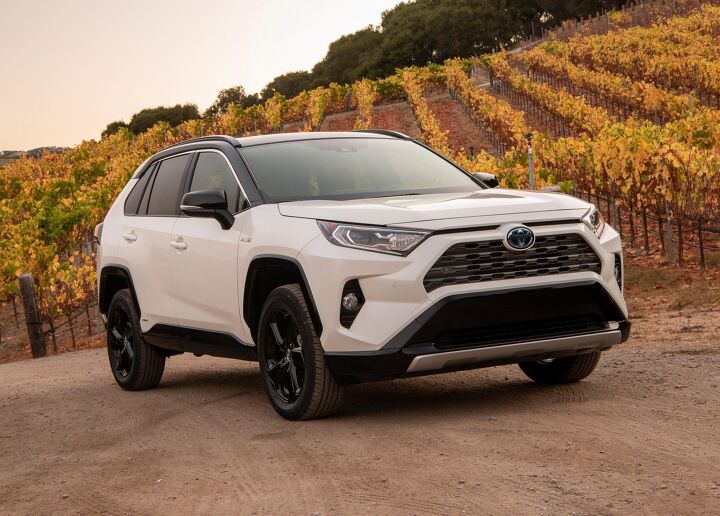

















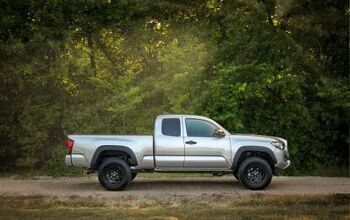

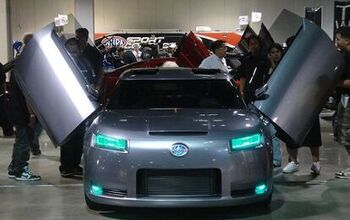

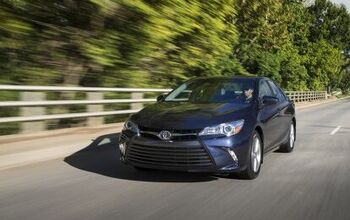



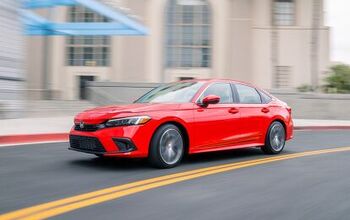






Comments
Join the conversation
Mary sold GM Europe, which has been losing money for decades, to Groupe PSA (Stellantis). It posted a $587M USD profit at the close of its next full fiscal year. Don’t forget she also bailed from Australia and a bunch of Asian countries as well. Cut your way to prosperity. Yeah, that’s the ticket. Just like when they turfed a bunch of brands to devote more resources to the existing ones. How did that work out? When the final numbers come out, GM’s finance and communications people are going to parse the numbers until they come up some BS moved goal post such as “GM is investing in the future — look no further than our results in 2021 where we sold more vehicles on platforms less than 5 years old than any other manufacturer. WE WIN. GM thinks that kind of nonsense will fool others when the bottom line is they’re only BSing themselves. That outfit’s culture has been a breeding ground for corporate stooges since the early 60s.
GM quit making new vehicle brochures for 2021. I'm sure that helped~